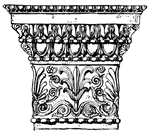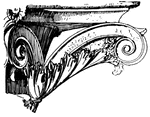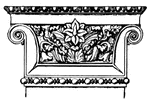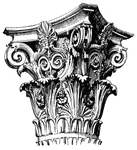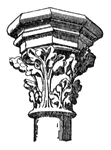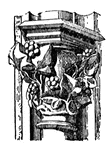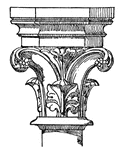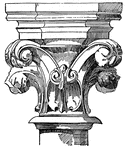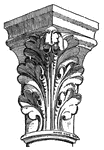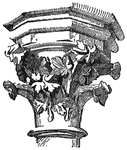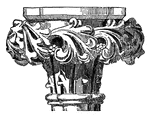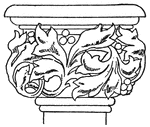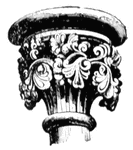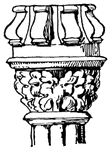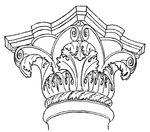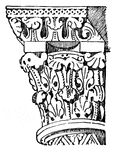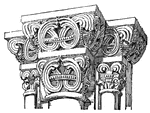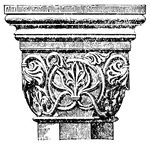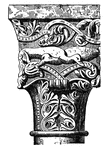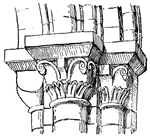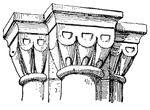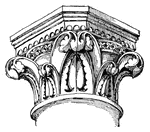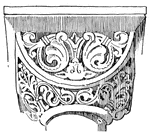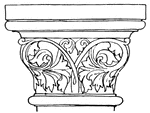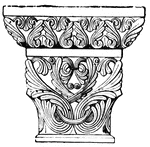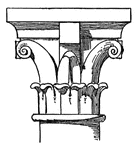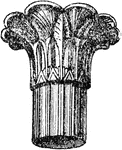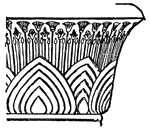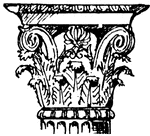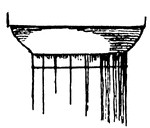The Capitals ClipArt gallery includes 169 illustrations of the top component of a column.
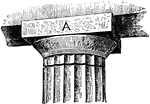
Abacus
"In architecture the slab or plinth which forms the upper member of the capital of a column or pillar,…
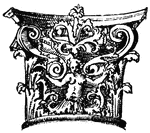
Antic
Antics are fancies having no foundation in nature, as sphinx, centaurs, etc., different flowers growing…

Antic
Antics are fancies having no foundation in nature, as sphinx, centaurs, etc., different flowers growing…

Capital and Entablature from the Rock Tomb of Darius
The columns in the ruins of Persepolis are circular and slender, and have capitals and bases. The capital…

A Capital from Karnak
"In their private dwellings the Egyptians sometimes used graceful columns and the true arch (both of…
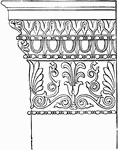
Ionic Antæ Capital from the Temple of Minerva Polias at Athens
The capital of the antæ and pilasters is without volutes, as is seen here. The shaft has no flutings;…
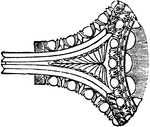
Plan of Ionic Antæ Capital from the Temple of Minerva Polias at Athens
The capital of the antæ and pilasters is without volutes, as is seen here. The shaft has no flutings;…

Capital in the Temple at Denderah
In some temples the pillars have, in lieu of capital, the face of a goddess, probably of Isis, with…
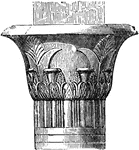
Capital in the Temple at Edfu
The capitals of the columns display an immense variety. The most beautiful have a crater-like form,…

Capital in the Temple at Edfu
The capitals of the columns display an immense variety. The most beautiful have a crater-like form,…

Capital Types
Figures a and b show the bell-shaped (campaniform) capital. Figure c is a palmiform capital.
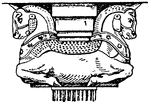
Ancient Persian Capital
The Ancient Persian capital is a design of the fore-parts of bulls. It is an Old Persian style that…

Antique Corinthian Capital
The antique Corinthian capital is a found in Melos, Greece. It is a design of a two rows of leaves that…

Byzantine Capital
The byzantine capital is found in the St. Sophia in Turkey. This design is called a Trapeziform, a byzantine…
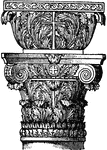
Byzantine Capital
"Byzantine Capital. The leading forms of the Byzantine style are the round arch, the circle, and in…
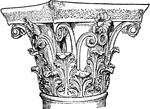
Corinthian Capital
An illustration of a Corithian capital from the Tholos of Epidaurus. In several traditions of architecture…
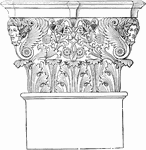
Corinthian Capital
The structural tendency which prevails in the capitals of all orders to change from the circular form…
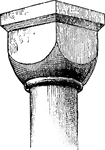
Cushion Capital
A capital of such form as to appear like a cushion pressed upon by the weight of the entablature.
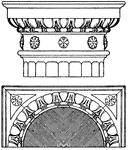
Doric Capital
The Doric capital is an Italian Renaissance design consisting of the abacus, which is square and the…

